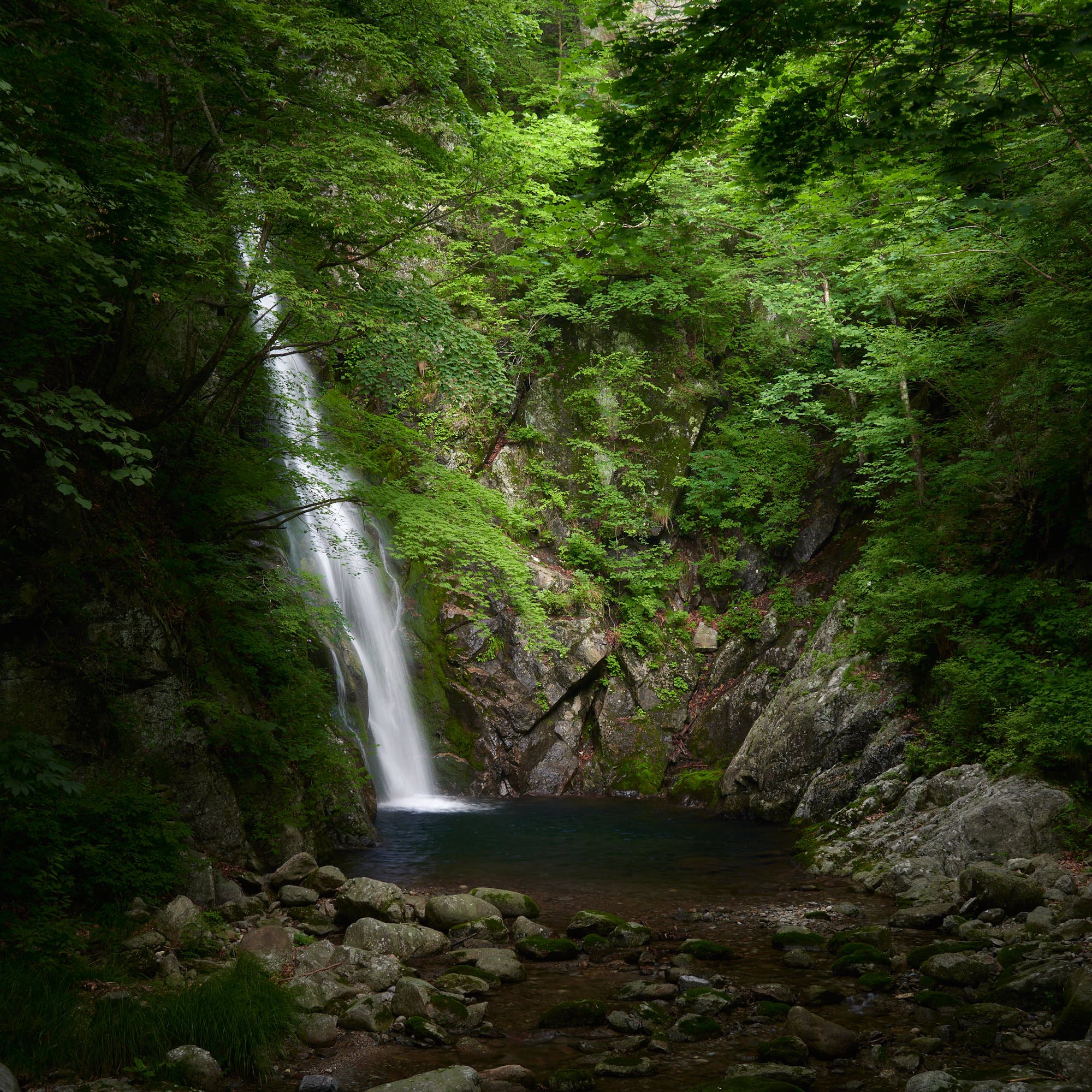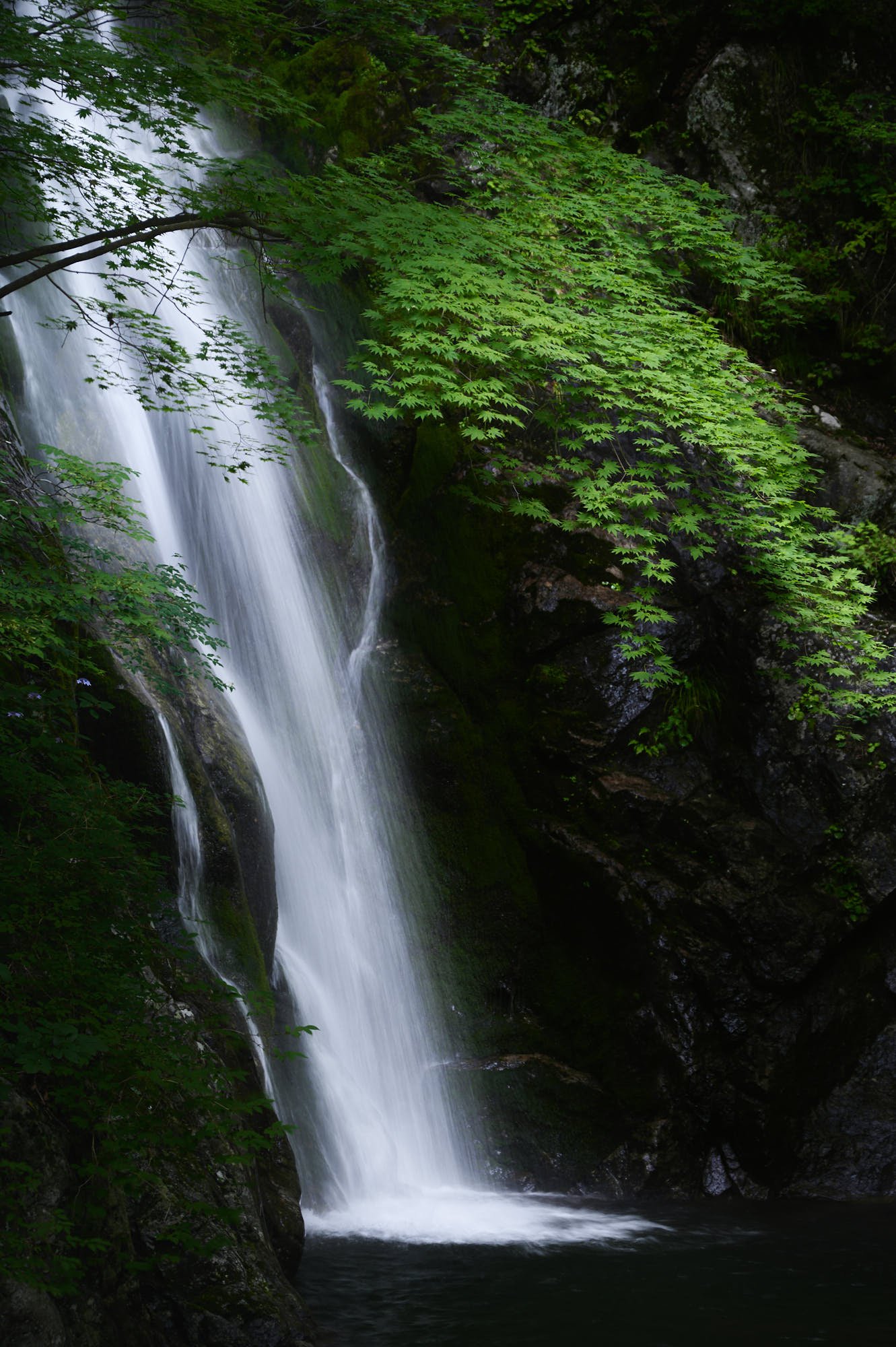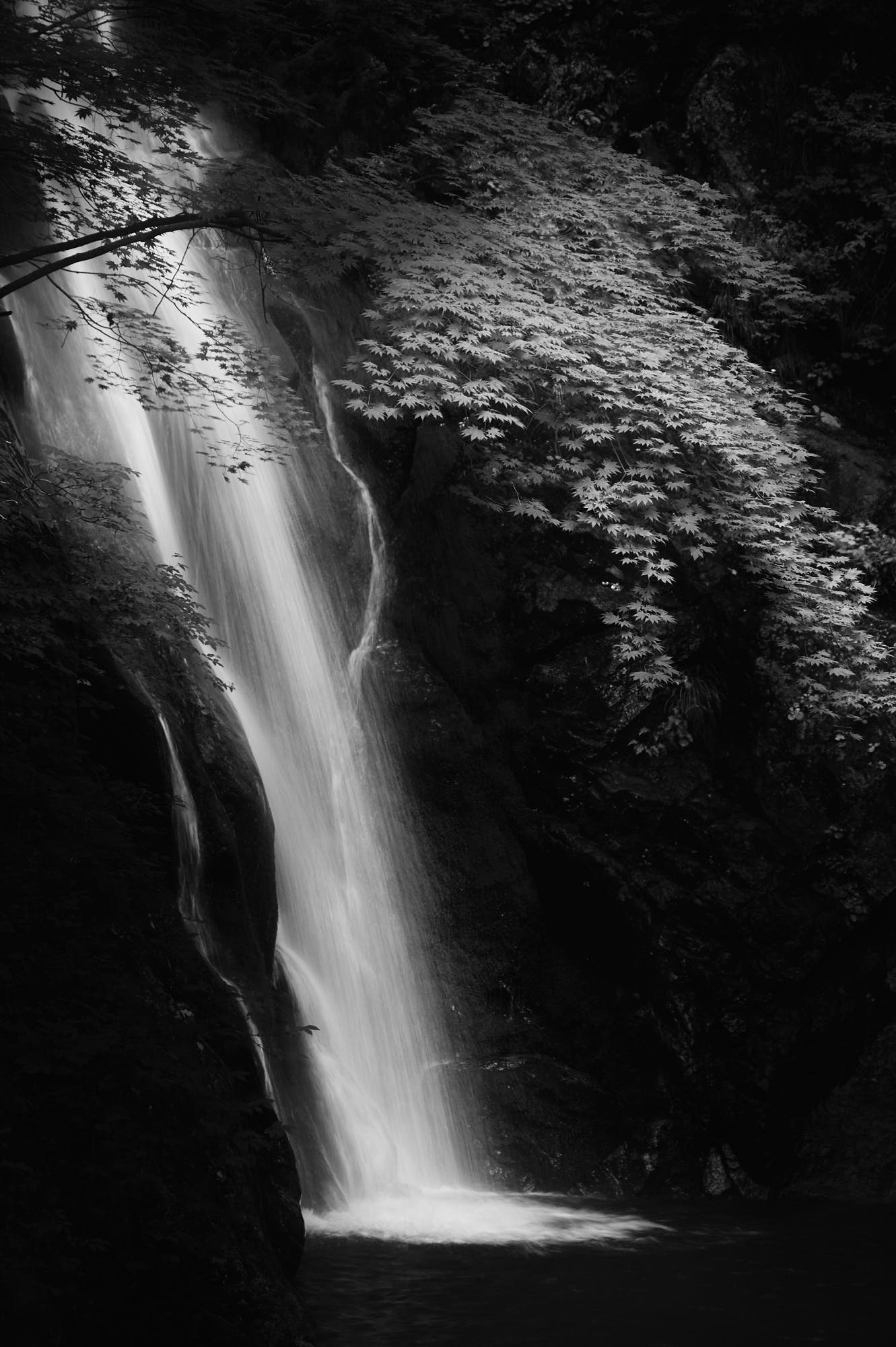waterfalls and balance
I sense that there is a similarity between waterfalls and an artist’s life, and by extension, life in general. The path water will take is always there, whether made of solid rocks or soft moss. In society too, our path is somewhat set, either by one’s sheer will or by society itself. If no water runs, the watefall's heart is dry. If we are lonely or have no meaning in our steps, so is ours. If it rains too much, the water overflows and destroys the path it is following. For us too; an excess of greed, emotion, food, etc, and we start a self-hurting cycle. Only when the water runs in a specific quantity does a waterfall shine with immense beauty. Only when we have significant meaning and we take significant actions do we find a balance in our hearts.
This blog is about finding this balance in my waterfall photography.
Let’s start at the very beginning. When summer comes in Korea it means 2 things: heat and rain. Heat means that many days I won’t be hiking, my body doesn’t do well in the heat anymore… Rain is a better phenomenon. It surely brings its share of destruction every year and urban humans are temporarily indisposed with it. But it also spreads life, animals or plants thrive in summer. So do waterfalls. I have to admit, rain also brings me back to life. Paradoxically, it only makes me more thirsty. More thirsty for waterfalls. More thirsty for photography. More thirsty for improvement. More thirsty. More. More.
I want to start further back, to give you perspective.
Very early spring in Yongma Mountain - 용마산, Seoul, an unnamed waterfall a friend and I found randomly. We call it the “stupa valley” because of the stupas/stone pagodas all along the stream.
There is barely any water, but I know that, come July, the place will be gorgeous… How can I possibly wait until then?
The vegetation in the previous image was in the starting blocks.
Now the race is on. Every tree is trying to catch as much sunlight as possible and I, as many waterfalls as possible.
Nature is now singing at the top of its voice. It’s quite a change from just 3 months ago! The monsoon is starting, clouds are low and rain starts falling. Through the fog the waterfall is slowly inflating…
Another day, conditions were exceptional. At the end of a heavy rainfall, a break in the clouds let some focused light shine directly on the falls… magical.
In response to nature’s beauty, I applied my favorite technique: a polarizer filter and a 10-stop ND filter. The only way to photograph a waterfall is to drag my shutter speed as long as possible… right?
Let’s get a little closer now, here’s a waterfall I wholeheartedly adore: Myeongji falls - 명지폭포. It is situated 1.5 hours northeast of Seoul in a mighty mountain chain that culminates above the 1200m/4000ft mark. I love this place because the water is very cool, the pool is very deep and there are rocks to dive from. The perfect place! Ah yes, it looks good too! What’s more, it’s in the shade so no need for extra ND filters to lower my shutter speed and achieve that water silky effect. Because it’s all about the silky effect, isn’t it?
Welcome, you are on the threshold. This rock may be regarded as an entrance monument. In the following image of this place, please keep in mind the aspect that the waterfall takes.
The pool is surrounded by high walls that are very slick and covered with bugs. The only side I can climb is thankfully the one opposite the falls. Angles are scarce but it only makes this photo trip more challenging. I love it!
Balancing my tripod on this steep and slick rock face and getting a long enough shutter speed was hard work. But, thanks to the stunning light that day, the natural contrast made all that effort worth making. Wait, I’ll climb up a little more…
This is the right height! I can use this vine as foreground interest and still catch your attention with the waterfall in the back. Also, the U shape that the vine creates is very nicely broken by the rock line, almost like an inverted peace sign.
I feel that it is in this image that all the elements fall in place best. The waterfall is so well positioned at the convergence of some lines and inside some others. It was quite a perilous climb but I’m very happy with the result. I’ve showed these images around and no one seems to agree on their favorite, so let me know which image in the set is your favorite.
So far, I have been single-mindedly set on one technique and one result, that of making the waterfall as silky smooth as possible. I thought this was the only way to capture a waterfall properly, artistically. I was about to meet a waterfall that would change that mindset. Meet the Huibang Falls - 희방폭포, in Sobaek National Park - 소백산국립공원.
Unfortunately, because of the national park restrictions in place, I wasn’t allowed to swim here… Shame, don’t you think?
Sorry, let me focus back on the photography! This shot is an introductory image. The water falls into a lush mini canyon from a 23m/75.5ft break in the rocks. Light can only come from above, in the middle of the pool. At this height water gathers some serious speed, no need to extend my shutter speed too long, it made my life easier.
The main attraction of this mini canyon is the moss growing everywhere on the wet rocks. It adds so much life to the landscape. It also reflects light in such a unique way that I can imagine green waves on mossy surfaces. You can see those too, can’t you?
Do you prefer it square or more panoramic? I really can’t decide but I feel that, in this crop, the front falls are stronger. And so are the mossy wave patterns. Let’s move closer…
Isn’t this moss fascinating? It resembles a forest of mini bushes competing for space on this rock. I didn’t expect so much detail in this tiny realm. Korean summer is truly stunning!
Now that you have a broad understanding of the place, I can dive into the evolution that this waterfall pushed on to me. In the previous places, I tried to slow my shutter speed to the point where water lost all its detail and formed a smooth white trail. It certainly is very elegant and refined. But here the water was falling very violently down and I wanted a way to reproduce it in my images. Also, I thought it would be an even better concept if I could add a static element in front of the rushing water as a contrasting subject. I had to re-learn my whole technical set. Here is the result.
This maple tree was just too tempting not to include in the frame. Can you feel the speed of the water now? I kept my shutter speed lower than before so I could retain some of the streaks that water made while falling. I really feel that it adds to the overall dynamism of the image. By the way color or black and white?
As we’re about to get even closer don’t hesitate to scroll back up and compare the water’s texture and the feeling it conveys. Here is the last image for this month:
In essence, here is the image I was hoping to capture. A still maple branch that follows the shape of a powerful waterfall. Stillness vs motion. This image awakes in me philosophical ideas about how our society moves ever faster but our human happiness seems to reside in our ability to stand still and breathe… At least that is the message I intend this image to convey.
It took me 30 minutes of standing precariously on pointy wet rocks, hoping the breeze would give the leaves just an instant of calm to click the shutter button. Talking about stillness! Also, can you imagine this image in the fall with these maple leaves bright red? I’m definitely heading back there in a few months!
I realize now how one-minded I have been. Like an overflowing waterfall, I let light imprint on my sensor too long and disregarded the reason why I did that. It could defeat the purpose, but like rushing water, I was blind to that fact. Thanks to this last photoshoot I have found balance again. Shooting and editing with intent is key to every photographer. Intent is vital to any kind of artist. Using a proper amount of technique, color, light, and motion is the base of the skill of photography. Using those for a purpose is what makes it an art. I am grateful to have been reminded of that by the most magnificent phenomenon of summer.
I also hope that this beautiful lesson I was given can serve you. May balance drive your actions until you achieve your goals.
Map to Myeongji Waterfall (the second spot) here:
Map to Huibang Falls - 희방폭포 (he third spot) here:
Thank you ever so much for reading about my progression. It isn’t always easy to admit I was heading the wrong way, let alone in public. So if it can help you re-imagine how you see/do your art it will have, at least, been beneficial. At minima, I hope you enjoyed those waterfall images and that they inspired a walk in your local natural area.
If you want to be updated before everyone when I post a new blog, subscribe below.
If you want to see more images of natural beauties in Korea, or talk to me directly, follow me on instagram @romainphoto_outside.
If you have any questions about landscape photography or Korea’s nature let me know in the comments section below. Also, please share my blog so that, one day maybe, I can meet you on a hike!
A bientôt!














